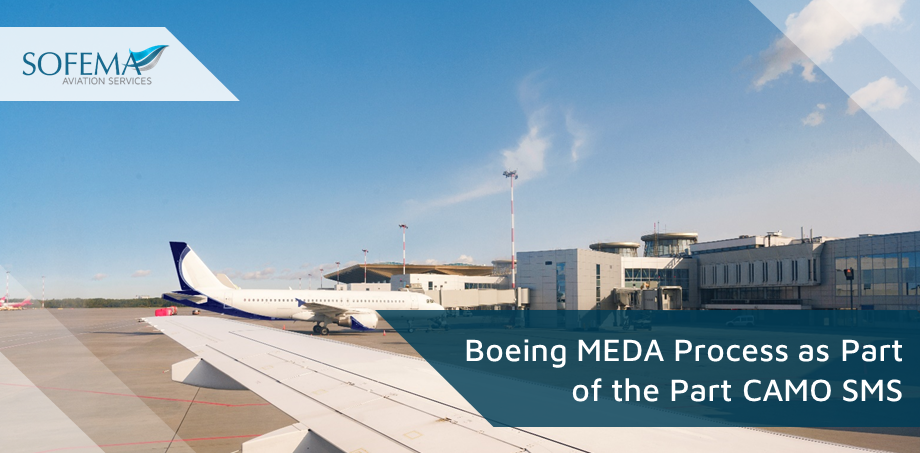Sofema Aviation Services (SAS) considers the benefits of using Boeing MEDA to support the Part CAMO Safety Management System.
Can an EASA Part M Organisation utilise the Boeing MEDA Process as Part of the Part CAMO SMS?
Developing an Effective EASA PART CAMO Safety Management System utilising Boeing MEDA Process.
Introduced in 1995, Boeing has provided the industry with a human factors tool namely the Maintenance Error Decision Aid (MEDA).
The tool enables an understanding of contributing factors to maintenance errors. The scope includes maintenance errors, as well as violations of company policies, processes, and procedures which have led to unwanted outcomes.
Typical Maintenance Control Failures addressed by MEDA
a. Scheduled task omitted/late/incorrect
b. MEL interpretation/application/removal
c. CDL interpretation/application/removal
d. Incorrectly deferred/controlled defect
e. Airworthiness data interpretation
f. Technical log oversight
g. Airworthiness Directive overrun
h. Modification control
i. Configuration control
j. Records control
k. Component robbery control
l. Mx information system (entry or update)
m. Time expired part onboard aircraft
n. Tooling control
o. Mx task not correctly documented
p. Not authorized/qualified/certified to do task
q. Other – explain
What Does EASA Expect within a Part CAMO SMS?
Contained within the EASA Part CAMO Safety Management System (SMS) are the following elements:
a. clearly define responsibilities and accountabilities for safety;
b. establish a safety policy;
c. ensure the identification of aviation safety hazards entailed by its activities, including through an internal safety reporting scheme;
d. ensure the evaluation of aviation safety hazards and the management of associated risks;
e. take actions to mitigate the risks and verify the actions’ effectiveness;
f. maintain personnel trained, competent, and informed about significant safety issues;
g. document all management system key processes;
h. effectively manage risks in contracted and subcontracted activities;
i. monitor compliance while considering any additional requirements that are applicable to the organisation.
Gathering Data within an EASA Part CAMO SMS
Whilst Negative events can provide us with the opportunity to learn safety lessons, clearly a better way is to develop proactive ways to gather and process the information (DATA).
Such processes must be manageable at the company level, and to deliver measurable value.
CAMO Organizations typically use data from a variety of sources (for example – Reliability)
The Data we gather should be measured by quality, not quantity. Which means essentially we have strong and effective processes to collect, analyse, disseminate, and to develop appropriate mitigations.
SMS as a system is unique and tailored to each organisation and has to adapt to organisational best practices as well as local culture.
What`s more :
Next Steps
Follow this link to our Library to find & Download related documents for Free.
Please visit Sofema Aviation Services or Sofema Online for Classroom, Webinar & Online Training.
For questions and comments please email team@sassofia.com
Tags:
Airworthiness, aviation safety, Aviation Safety Management, Aviation Safety Management System, Boeing MEDA, CAMO, EASA, EASA Part – CAMO, Human Factors, Maintenance Error Decision Aid (MEDA)




